The National Register of Historic Places lists many properties significant for women's history. We take the opportunity of Women's History Month to highlight just some of the properties that exemplify the contributions of women to American history.
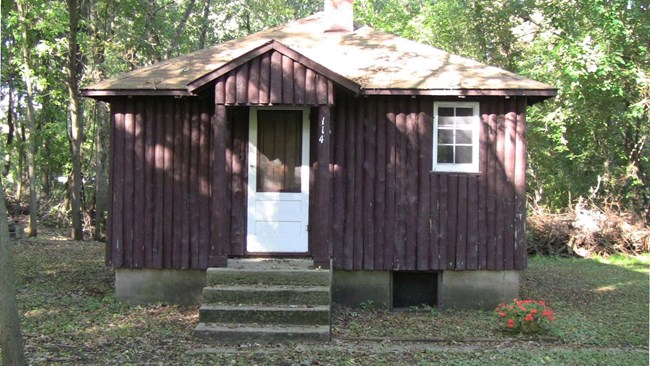
Photograph by Rowan Davidson, courtesy of Wisconsin State Historic Preservation Office
Featured Historic Properties for Women's History Month:
Lorine Niedecker Cottage, Sumner, Wisconsin
The Lorine Niedecker Cottage, constructed in 1946, is a largely intact, small Rustic style home of the notable Modernist poet Lorine Niedecker. The cottage is located in an area known as Blackhawk Island in Sumner, Wisconsin.Niedecker is widely considered to be one of the seminal modern Objectivist poets of the mid-twentieth century. While her work was largely unknown during her lifetime, she took part in the discourse on modern poetics from the 1930s through the 1960s, her work was more frequently published later in her life, and posthumously she has been published and has received critical acclaim. Her work, often focusing on the concept of place, biography, and the subconscious, is considered some of the finest examples of objectivist, surrealist, and folk poetry of the period.DeLay, Dorothy, House, Neodesha, Kansas
Dorothy DeLay has been referred to as the most famous violin instructor based on her methods and influence. Dorothy was the first American and first woman to hold the main teaching chair position at Juilliard. Her craft as a violinist was shaped during her formative years, growing up in this residence in Neodesha, Kansas. Dorothy DeLay revolutionized teaching. She specialized in the teaching of child prodigies. Itzhak Perlman is arguably the greatest violin artist of this generation and his teacher at Juilliard was Dorothy DeLay. Many violinists who studied with Dorothy became famous and celebrated performers – Sarah Chang, Gil Shaham, Midori, Nadja Salerno-Sonnenberg, and many others. This group is a “Who’s Who” of the most spectacular soloists of our time.
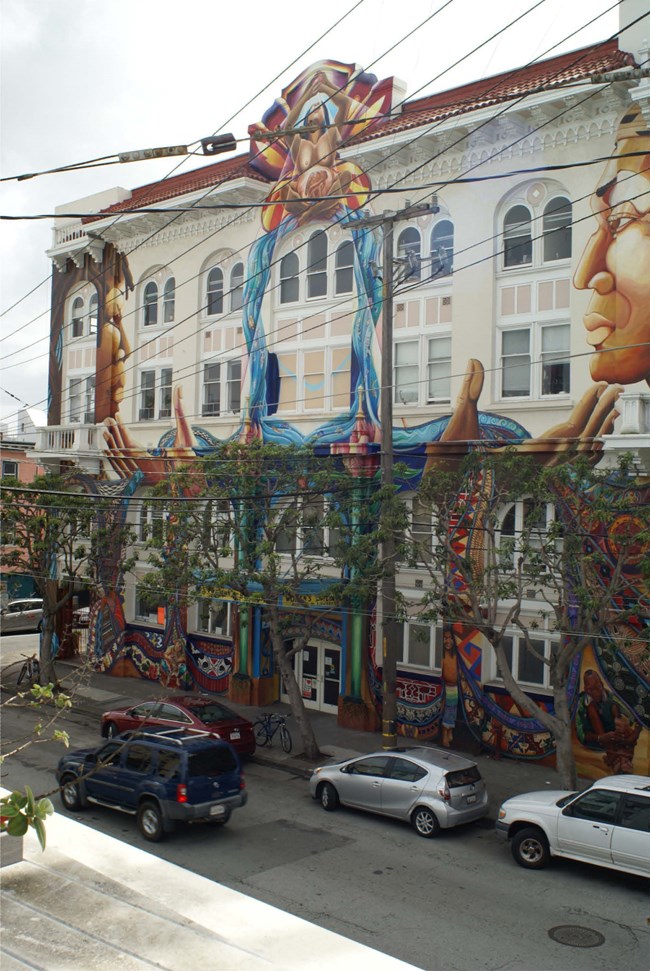
Photograph courtesy of California State Historic Preservation Office
Past Highlights:
Veterans Memorial Library and Woman's Club of St. Cloud Auditorium, St. Cloud, Florida
The Veterans Memorial Library and the Woman’s Club of St. Cloud Auditorium are two buildings located near downtown St. Cloud, Florida, joined together by a small one-story hyphen. The Women's Club had planned for the library but but World War I forced them to delay. Between 1917 and 1921, the club focused primarily on relief efforts and war-related charitable causes, including Near East Relief and Red Cross work. After the war they were able to hire architects Isabel Roberts and Ida Annah Ryan, who had just opened the first female architectural firm in the city of Orlando and one of the first in the state, known as Ryan and Roberts.Ephraim Relief Society Granary, Ephraim, Utah
The Ephraim Relief Society Granary, constructed c.1872-1875 (and rehabilitated in 1991), in Ephraim, Utah, is a vernacular classical-style stone granary building located along the east side of Main Street in the rural town of Ephraim, Sanpete County, Utah. It is one of only nine granaries remaining that were used by the Relief Society associated with the Jesus Christ of Latter-day Saints (LDS). It is also significant because of its ownership and use by the women of the Ephraim chapters (wards) of the LDS Relief Society, particularly related to the historic grain storage program. Grain collection and storage would be administered by local Relief Society chapters throughout Mormon settlements. It is noteworthy that the grain program was headed up by women because it was rare for women to be publicly in charge of anything in those years, or to have control of resources.
Women's Building, San Francisco, California
The Women’s Building (TWB) in San Francisco’s Mission District represents a powerful physical embodiment of the values and achievements of second wave feminism during the mid to late twentieth century, and the movement’s efforts to secure social justice and gender equality for women and other minorities (LGB/racial/ethnic). As one of the first and longest tenured women-owned and women-operated women’s centers in the U.S., TWB represented a significant, high-profile model for the establishment and operation of similar facilities nationwide.
Saint Joseph's Home for Working Girls, Worcester, Massachusetts
The Saint Joseph’s Home for Working Girls (St. Joseph’s Home) was built to provide temporary housing for women in Worcester, Massachusetts. Today, St. Joseph’s Home, which is known as Abby’s House, is used as a temporary shelter and affordable housing for women. Saint Joseph’s Home for Working Girls is a well-preserved example of an early 20th-century boarding house for working women.
Lucy Flower Technical High School for Girls, Chicago, Illinois
Lucy Flower Technical High School for Girls (Flower Tech), constructed in 1927, is significant as the only all-girl public school and the only female vocational school in Chicago's history. The school, is located in the residential Garfield Park neighborhood of Chicago, Illinois. Flower Tech was the only high school in Chicago run by a female superintendent, principal, and all-female faculty that catered to an entirely female student body.
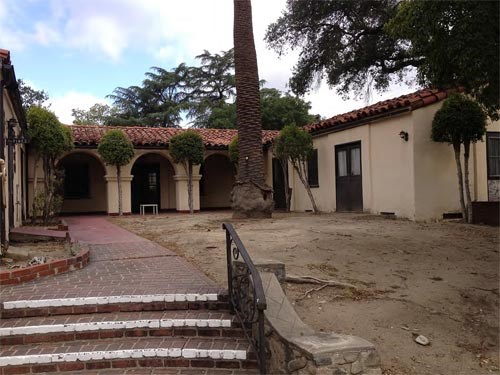
Photograph courtesy of California State Historic Preservation Office
Rockhaven Sanitarium Historic District
Photograph courtesy of the California State Historic Preservation Office
Rockhaven Sanitarium Historic District, Glendale, California
one of the best extant examples of an early twentieth century woman-owned, women-serving private sanitarium in the State. It was one of the first of its type in the nation. It reflects the vision of Agnes Richards, R.N., and represents a small but significant movement that sought to improve the conditions of mentally ill women in the early twentieth century.
Sroufe House, Dover, Kentucky (women who write history)
The documentation, prepared by a Girl Scout, highlights the role the house played in the escape of three enslaved people owned by the Sroufe family. Noted Underground Railroad “conductor” John P. Parker, a free African American man living across the river in Ohio, helped Celia Brooks, her husband, and baby escape bondage and cross the river to freedom.
Strutwear Knitting Company Building, Minneapolis, Minnesota
Thousands of industrial workers from across all trades, skill levels, and genders joined the eight-month-long standoff, which marked a turning point in Minneapolis's labor movement. It was particularly a triumph for Strutwear's nearly 900 female operatives, who were initially excluded from the union's member drive. Prior to the Strutwear strike, the American Federation of Hosiery Workers had not included women among its ranks, but their participation was crucial to the strike's success.
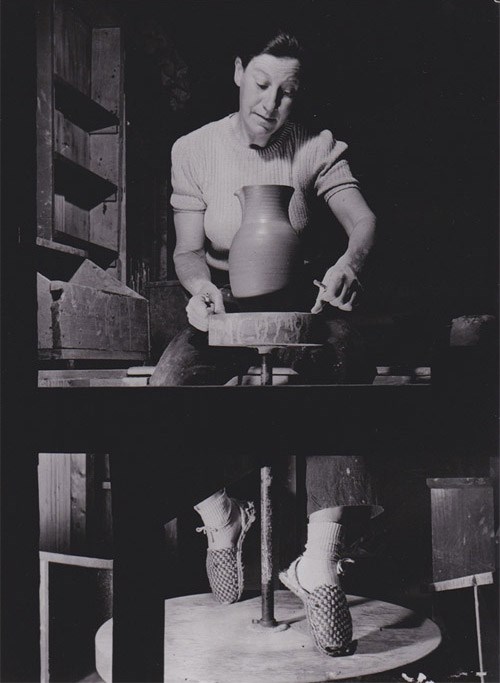
Photograph courtesy of the California State Historic Preservation Office
Irene Burns House, Auburn, California
Irene Burns, a schoolteacher who became the first woman elected to political office in Placer County, California. After three terms as County Superintendent of Schools, she taught developmentally disabled students in San Francisco, then established a school for disabled students in her Auburn home, known as the Burns School.The Home of the Friendless, St. Louis, Missouri
Charlotte Charless established the Home of the Friendless (Home) in 1853 to "afford relief to destitute and suffering females," specifically elderly women and widows who had lost their means of financial support.1 The Home served as a senior care facility for nearly 160 years, becoming a landmark in the St. Louis community.
Women's National Republican Club, Manhattan, New York
was built 1932-34 as the third home for the institution that was founded in 1920. The club is significant for its association with the Republican political party and the increased establishment of women's clubs following the adoption of the 19th Amendment to the Constitution that gave women the vote. Following its formation, the WNRC took the next step of encouraging women to engage in partisan politics. Founder and first president Henrietta Wells Livermore- a major figure in the women's suffrage movement- imagined the club as a major force in educating newly enfranchised women voters.
Pond Farm Pottery Historic District, Sonoma County, California
Pond Farm Pottery is significant under Criteria A and B at the national level of significance in the areas of Art, Education, and Social History for its association with the Studio Pottery Movement and ceramist and teacher Marguerite Wildenhain who lived, worked, and taught at Pond Farm. American ceramists of the 1940s and 1950s were in the early stages of a ceramics revolution that resulted in several developments in ceramics in the United States, including the emergence of the Studio Pottery Movement. During the first half of the twentieth century, European immigrant ceramists such as Marguerite Wildenhain introduced new arts and crafts skills, methods, and philosophies across the country. Her school, Pond Farm Pottery, played an important role in the emergence of ceramics as an important art form. Wildenhain arrived at Pond Farm in 1942 and concluded her active working life in 1980 with the last summer session, publication of her third book, and a retrospective exhibit of her work. She remained at Pond Farm until her death in 1985. The property meets Criteria Consideration G: Properties That Have Achieved Significance Within the Past Fifty Years for its strong association with the Studio Pottery Movement of the mid-twentieth century and the internationally significant contributions of Wildenhain, an exemplary ceramist who was an important female pioneer in ceramics and ceramics education.
Elizabeth C. Quinlan House, Minneapolis, Minnesota
The house was created for Elizabeth C. Quinlan, who was the co-founder of the Young-Quinlan Company, which, in 1894, was the first woman’s ready-to-wear shop west of the Mississippi River. Her highly successful department store, innovative practices and entrepreneurial work led her to become a leader of national recognition in the apparel industry and a pioneering business woman.
Mt. Airy (Grandma Moses House), Augusta County, Virginia
Grandma Moses was a prominent painter who started creating pictures in the 1930s from her memories as a farm wife both in the Virginia Shenandoah Valley and the New York Hoosick Valley. Moses moved to the Shenandoah Valley in November of 1887, with her husband Thomas Solomon Moses. Mt. Airy was the first house she and her husband owned in their married lives---they bought it for $6,000 and lived there from January 1901 to September 1902.
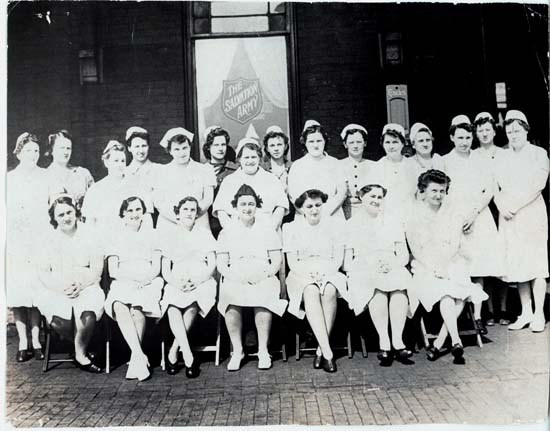
Photograph courtesy of the Dennison Railroad Depot Museum
" I was able to get only one sandwich for breakfast and the rest of the day I had nothing till we came to Dennison, where a miracle happened. With people behind us we can do only one thing, and that is come out victorious."
The Pennsylvania Railroad Depot and Baggage Room in Dennison, Ohio, was famous during World War II for its canteen, where an estimated 1.3 million American service men in the armed forces were served food and drinks on their way to training bases and disembarkation for distant fronts overseas. Nearly 4,000 local volunteers, primarily area women, staffed the canteen, and funds were collected to purchase food, coffee, and other supplies.
The Girl Scouts 100 year anniversary: The Juliette Gordon Low Historic District consists of three individual properties in Savannah, Georgia: the Wayne-Gordon House/Juliette Gordon Low Birthplace, the Andrew Low House, and the carriage house and servants' quarters for the Andrew Low House which became commonly known as the First Girl Scouts Headquarters.
Anna Hyatt Huntington, Georgetown County, South Carolina
For Women’s History Month, the National Register is showcasing two historic sites associated with the world famous woman sculptress Anna Hyatt Huntington (March 10, 1876 – October 4, 1973).
Atalaya, Georgetown County, South Carolina:
Atalaya was the winter home of world famous sculptor, Anna Hyatt Huntington, and her philanthropist husband, Archer Milton Huntington. In addition to being Anna's husband, Archer was also the designer of Atalaya.
Brookgreen Gardens, Georgetown County, South Carolina
Brookgreen Gardens is known today as a botanical and sculpture garden. Anna Hyatt Huntington was co-founder of Brookgreen Gardens and many of her sculptures are on display there.
Still Pond Historic District in Kent County, Maryland located at a crossroads surrounded by family farms, Still Pond served as a commercial hub and center of community life on Maryland's Upper Eastern Shore. On May 2, 1908 Mary Jane Howard, Annasandra "Annie" Maxwell, and Eliza Kelley made history as the first women in Maryland to vote in an election. Listed in the National Register of Historic Places over 100 years later in August, 2009.
Mary and Eliza Freeman Houses are significant as the last two houses to survive of "Little Liberia," a settlement of free African Americans in Bridgeport, Connecticut
O'Keeffe, Georgia, Home and Studio: The home and studio of the artist Georgia O'Keeffe (1887-1986) in Abiquiu, New Mexico (approximately 50 miles northwest of Santa Fe), is one of the most important artistic sites in the southwestern United States.
Mulberry Plantation, Kershaw County, South Carolina: is the most important site associated with the writing of Mary Boykin Chesnut's remarkable first hand account of southern society during the Civil War.
Architecture of Julia Morgan: Julia Morgan was one of the nation's first prominent female architects. Among the almost 800 buildings she designed are: Hearst San Simeon Estate, San Luis Obispo County, California,Berkeley Women's City Club, in Alameda County, California,
Grandma Prisbrey's Bottle Village, Ventura County, California: Built between 1956 and 1965, Bottle Village is a 1/3-acre unique folk art environment designed and erected by folk artist, Tressa "Grandma" Prisbrey.
Azurest South, Chesterfield County, Virginia: Designed by Amaza Lee Meredith (1895-1984), one of the nation's few black female architects, the house is a significant landmark of African-American material culture and design.
Piney Point Coast Guard Light Station: Between 1776 and 1942, 141 women were officially appointed Keepers of the Light by the United States government. Nineteen women served as keepers in the state of Maryland on the Chesapeake Bay.
Rachel Carson Home: in Silver Spring, Maryland, is significant as the place in which American biologist, naturalist, writer, and poet, Rachel Carson, wrote the highly acclaimed 1962 book, Silent Spring, which made her, more than any other person, the acknowledged advocate of the early ecology movement.
Willa Cather Properties in Webster County, Nebraska: Willa Cather captured the spirit of the pioneer era as perhaps no other American author.
Mary Elizabeth Jane Colter Buildings, Coconino County, Arizona: The Hopi House, Hermit's Rest, the Lookout Studio and the Desert View Watchtower are not only the best and least altered, but some of the only remaining works of the master architect and interior designer Mary Elizabeth Jane Colter.
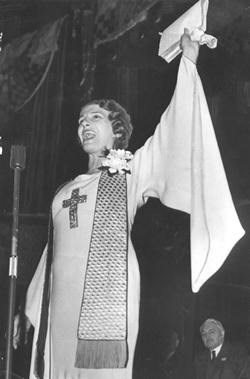
Photograph courtesy of the Regional History Center - University of Southern California
Marietta Canty House: in Hartford, Connecticut, is primarily significant for its association with actress Marietta Canty (1905-1986), who received critical acclaim for her performances in theater, radio, motion pictures, and television as well as her political and social activities.
David T. and Nan Wood Honeyman House in Multnomah County, Oregon: Nan Wood Honeyman (1881-1970) was a progressive local and national leader for the Democratic party and of Prohibition reform.
Clara Barton National Historic Site in Montgomery County, Maryland: Resting on a slight knoll in a quiet, shaded yard above the Potomac River Valley, a large, pale yellow, warehouse-like building stands as a memorial to the complicated personality and persistent character of Clara Barton, a pioneer in women's history.
Hotel Metropolitan in McCracken County, Kentucky: The Hotel Metropolitan, the first hotel owned and operated by and for African Americans in Paducah, was constructed for a young black woman in 1909.
Turkey Point Lighthouse in Cecil County, Maryland: authorized by Congress in 1831 with the tower and keeper's quarters built in 1833, was tended by more women keepers than any other lighthouse on the Chesapeake Bay.
Maggie L. Walker National Historic Site in Richmond, Virginia: commemorates the life and work of an exceptional woman who became very active in the economic, social, and philanthropic life of Richmond's African American community.
Ensor Farm: in Johnson County, Kansas, is known for its historic association with Loretta Ensor (1904-1991) and her brother, Marshall Hamilton Ensor (1899-1970), two of the most prominent radio amateurs who established one of the most complete amateur radio transmitting stations in America on their property during the early history of radio.
Frank B. Cooper Elementary School: in the West Delridge neighborhood of West Seattle, Washington, the Frank B. Cooper Elementary School is historically associated with Mrs. Thelma Fisher Dewitty, who holds the distinction of being the first African American to teach within the Seattle Public School District.
Lowell National Historical Park in Middlesex County, Massachusetts: While there is no single birthplace of industry, Lowell's planned textile mill city, in scale, technological innovation, and development of an urban working class, marked the beginning of the industrial transformation of America.
Eudora Welty House, Jackson, MS
Home of one of the most influential writers of the 20th century
Ellamae Ellis League House, Macon, GA
Self-designed residence of accomplished Georgia architect Ellamae Ellis League
Woman's Athletic Club of San Francisco, CA
Established by women in 1915 to improve themselves--intellectually, physically and artistically
Eleanor Roosevelt National Historic Site in Dutchess County, New York: Val-Kill Cottage, the simple, two-story stone building located within the Roosevelt family property at Hyde Park, was the home of Eleanor Roosevelt (1884-1962) for the last 17 years of her life.
Patsy Cline House, Winchester, VA
Home of 20th-century country music legend Patsy Cline
Matinicus Rock and Whitehead Light Stations, Knox County, Maine
Two lighthouses in Maine tended by a 19th-century female keeper, Abbie Burgess Grant
Rosedown Plantation, West Feliciana Parish, LA
Gardens designed by Martha Turnbull, amateur 19th-century landscape designer
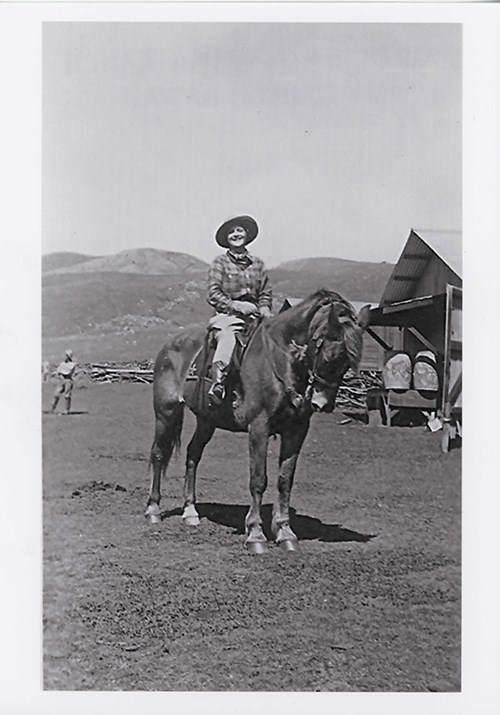
Photograph courtesy of Hawaii State Historic Preservation Office
Home of the journalist and author Marjorie Kinnan Rawlings.
Aldrich, Nathan C., House and Resthaven Chapel, Mendon, Massachusetts
Catherine Regina Seabury used this property to benefit the female factory workers of Boston.
Catt, Carrie Chapman House, Briarcliff Manor, New York
The home of the famous suffragist of the same name between 1919 and 1928, during the time when she played a pivotal role in securing the Nineteenth Amendment giving women the right to vote in 1920.
Violet Oakley Studio, Philadelphia, Pennsylvania
Studio of the artist and muralist Violet Oakley.
Bonniebrook Homestead, Taney County, Missouri
Rose O'Neill, artist and creator of the Kewpie doll lived and worked on this estate.
Anna Ranch, Kamuela, Hawaii
Find out about Anna Leialoha Perry-Fiske who saved her ranch, gave to charity, and won horseman ship contests.
Fisk, Robert and Elizabeth, House, Helena, Montana
Political, charitable, activist, and mother: Elizabeth Fisk was a leader in the early days of Helena, Montana.
Last updated: February 14, 2025
